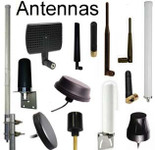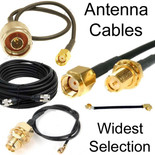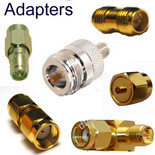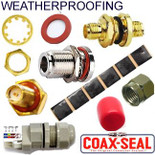Antennas, Antenna Cables, Wireless Products: Technical Articles
Antenna Testing with Vector Network Analyzers (VNAs)
VNA testers: Indispensable tools in the design, testing, and optimization of antennas.
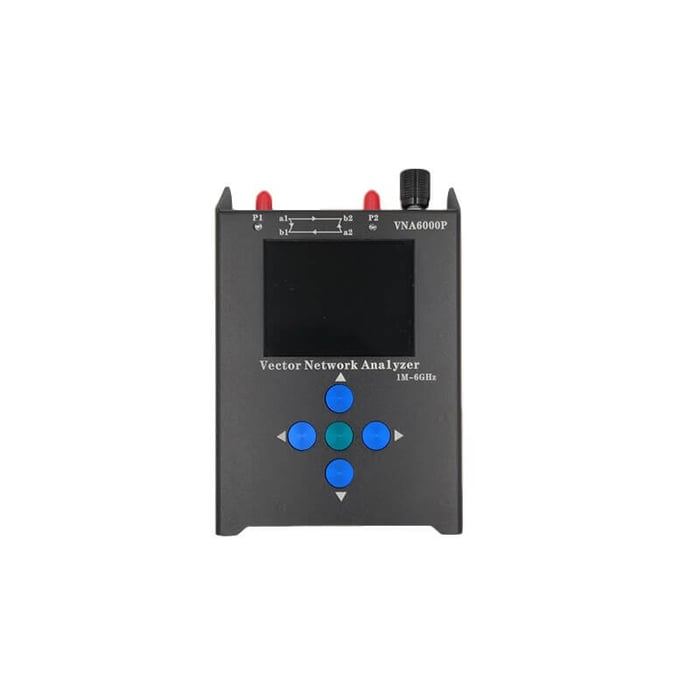
VNA testers provide a precise and versatile method for analyzing how antennas perform across their intended frequency ranges and under real-world conditions.
In the world of RF and microwave engineering, Vector Network Analyzers (VNAs) are essential instruments for evaluating the behavior of radio frequency components—including one of the most critical components in any wireless system: The antenna: From simple whip antennas to complex phased arrays.
A Vector Network Analyzer is an electronic instrument used to measure the network parameters of electrical networks, primarily in the RF, microwave, and millimeter-wave frequency ranges. VNAs assess how RF signals transmit and reflect through a device under test (DUT), typically presenting data in the form of S-parameters (scattering parameters).
Key Capabilities of VNAs:
S11 (Return Loss / Reflection Coefficient) – How much signal is reflected back from the antenna.
S21 (Insertion Loss / Forward Gain) – How much signal passes through from one port to another.
Phase and magnitude of signal responses.
Impedance matching diagnostics.
Real-time Smith Chart, VSWR, and gain visualization.
Why Use a VNA for Antenna Testing?
Antennas are passive components designed to radiate or receive electromagnetic signals efficiently at specific frequencies. Testing with a VNA helps ensure that the antenna:
Is properly matched to its feed line (typically 50 ohms).
Performs within its advertised bandwidth (frequency range).
Minimizes return loss (reflections that waste energy).
Operates with desired VSWR levels (ideally ≤ 2:1).
A poorly tuned antenna can result in:
Reduced range
Lower signal quality
Heat generation in transmitters
Increased battery drain in mobile devices
Common VNA Tests for Antennas:
| Measurement | Purpose |
|---|---|
| S11 / Return Loss | Shows how well the antenna is matched to the transmission line |
| VSWR (Voltage Standing Wave Ratio) | Measures reflection efficiency; VSWR of 1.5:1 or lower is often desirable |
| Impedance Plot | Confirms the antenna’s feed-point impedance across frequency |
| Bandwidth Verification | Ensures antenna maintains performance across its intended band |
Typical VNA Testing Setup for Antennas
Components:
VNA (e.g., Keysight, Rohde & Schwarz, NanoVNA)
Calibration kit (Open, Short, Load standards)
RF test cables and adapters
Antenna under test (AUT)
Anechoic chamber or open test environment (for far-field measurements)
Basic Steps:
Calibrate the VNA at the end of the test cable using SOLT (Short, Open, Load, Through) or equivalent.
Connect the antenna to Port 1 of the VNA (single-port S11 test).
Measure and analyze:
S11 curve
Smith Chart impedance trace
VSWR across frequency range
Optionally compare to datasheet specs or known standards.
Example Use Cases
Antenna development labs test new designs for embedded wireless modules (LoRa, GPS, Wi-Fi, LTE).
Field engineers use portable VNAs to verify and tune antennas on installed systems (base stations, IoT devices, UAVs).
Manufacturing QA ensures each antenna batch meets return loss and impedance specs.
Advantages of Using a VNA for Antennas
High precision vs simpler tools like SWR meters or spectrum analyzers
Wide frequency range (many VNAs support MHz to GHz)
Visual diagnostics (e.g., Smith Charts help with tuning)
Real-time feedback for adjusting antenna elements or matching networks
Practical Tips
Always calibrate close to the DUT to eliminate cable effects.
Use flexible, low-loss RF cables to maintain signal integrity.
Avoid nearby conductive objects when testing—especially at high frequencies.
For far-field radiation pattern testing, pair the VNA with a turntable and test antenna in an anechoic chamber.
Common Vector Network Analyzer (VNA) models, their frequency ranges, ports, typical use cases, and price tiers:
| Model | Frequency Range | Ports | Use Case | Price Tier |
|---|---|---|---|---|
| NanoVNA V2 Plus4 | 50 kHz – 4.4 GHz | 2 | Hobbyist/field | Lower (~$170–$300) |
| NanoVNA‑H4 | 50 kHz – 1.5 GHz | 2 | Entry-level antenna testing | Lower (~$70–$110) |
| RigExpert AA‑230 ZOOM | 100 kHz – 230 MHz | 1 | HF/VHF antenna & cable | Lower (~$300–$400) |
| Siglent SVA1015X + VNA | 9 kHz – 1.5 GHz | 2 | Budget bench measurements | Mid (~$1,800–$2,500) |
| Anritsu ShockLine MS46122B | 1 MHz – 6 GHz | 2 | Production testing | Mid (~$7,000–$10,000) |
| Keysight FieldFox N9912A | 30 kHz – 6.5 GHz | 2 | Rugged field use | Higher (~$10,000+) |
| Copper Mountain S5065 | 9 kHz – 6.5 GHz | 2 | Lab/microwave R&D | Higher (~$12,000+) |
| Rohde & Schwarz ZNL3 | 5 kHz – 3 GHz | 2 | Lab‑grade precision | Higher (~$15,000–$20,000) |
| Keysight E5071C ENA | 9 kHz – 20 GHz | 2–4 | R&D & production | Higher (~$12,000–$50,000+) |
Conclusion
VNAs provide deep insight into how antennas behave across frequency and how well they are matched to their systems. Whether you're building IoT devices, installing wireless infrastructure, or troubleshooting range issues, mastering VNA antenna testing is a crucial skill for RF engineers and technicians alike.

